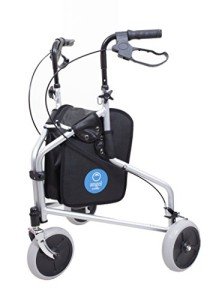See What Seat Walker Tricks The Celebs Are Utilizing
페이지 정보
작성자 Ermelinda 작성일25-06-10 02:17 조회49회관련링크
본문
The Seat Walker: A Comprehensive Guide to Mobility Aids
When it concerns keeping self-reliance and mobility, individuals with restricted mobility or disabilities often depend on numerous assistive gadgets. One such device that increasingly pertains to the leading edge of mobility aids is the seat walker. This short article offers an in-depth look at seat walkers-- their features, benefits, types, and the factors to consider when selecting one.
What is a Seat Walker?
A seat walker is a flexible mobility aid designed mostly for individuals who might have trouble walking unaided. It typically includes a frame with wheels, handles for assistance, and an integrated bench or seat, allowing users to take breaks when needed. Unlike basic walkers or rollators, which only use support for walking, the addition of a seat makes the seat walker significantly more practical for lots of users.
Secret Features of Seat Walkers
- Wheels: Most seat walkers are geared up with front wheels that enhance mobility and ease of use, enabling users to move efficiently over different surfaces.
- Seat or Bench: The most distinguishing function is the integrated seat, which offers a resting location for users when tiredness sets in.
- Deals with: Adjustable manages accommodate various user heights, supplying adequate assistance and making sure a comfy grip.
- Brakes: Safety brakes prevent the walker from rolling away when someone is seated, enhancing user security.
- Lightweight Frame: Many designs are created to be lightweight, making them easier to carry and maneuver.
Benefits of Using a Seat Walker
Seat walkers have numerous benefits that make them an ideal choice for many users.

- Enhanced Mobility: They offer greater stability and assistance than traditional walkers, minimizing the threat of falls.
- Convenience: The ability to rest at any point makes them suitable for those who tire quickly or have limited stamina.
- Independence: Seat walkers permit users to preserve a degree of independence by enabling them to walk and rest without assistance.
- Adaptability: Suitable for both indoor and outdoor use, these walkers can adjust to numerous environments.
- Exercise: Regular use motivates physical activity and social interaction, which can enhance general wellness.
Kinds Of Seat Walkers
Different types of seat walkers accommodate the differing requirements of users. Here is a breakdown of the most common types:

| Type | Features | Best For |
|---|---|---|
| Basic Seat Walker | Easy style, typically with a lightweight frame and very little features. | Users needing fundamental mobility assistance. |
| Sturdy Seat Walker | Strengthened frame, higher weight capacity, typically with larger seats. | Individuals requiring more robust assistance. |
| Rollator with Seat | Integrates seats with multi-height adjustable handles and much better maneuverability. | Users needing regular resting options. |
| Transfer Seat Walker | Designed for easy transport; often folds and has a small footprint. | Active users who travel frequently. |
Picking the Right Seat Walker
Selecting a seat walker includes a number of factors to consider to ensure it fulfills the user's particular needs. Here are necessary elements to bear in mind:
- Weight Capacity: Ensure that the seat walker (git.redhub.cc) can support the user's weight comfortably.
- Seat Height: Check the height of the seat to ensure it is appropriate and comfy for the user.
- Width: Consider your home and make sure the walker can fit through doors and narrow passages.
- Wheel Size: Larger wheels can handle rougher terrain, while smaller wheels are much better suited for indoor use.
- Weight of the Walker: A lightweight walker is beneficial for easy maneuverability and transportation.
- Brakes and Safety Features: Look for reputable brakes and safety assurances, such as stability and anti-tip functions.
Setting a Budget
Seat walkers differ substantially in rate depending upon their functions and develop quality. While it's important to discover a design that fulfills the user's needs, it's similarly essential to set a sensible budget plan.
Average Price Ranges:
- Basic Models: ₤ 50 to ₤ 150
- Rollators with Added Features: ₤ 150 to ₤ 300
- Heavy-Duty Models: ₤ 300 and up
FAQs About Seat Walkers
Q1: Who must use a seat walker?A1: Seat walkers are ideal for people with restricted mobility due to age, injury, or chronic conditions who require extra assistance while walking. Q2: Are seat walkers safe?A2: Yes, seat walkers are developed with safety in mind. They generally include brakes, sturdy frames, and slip-resistant grips. Q3: How do I maintain my seat walker?A3: Regularly examine the brakes and wheels for wear and tear.
Clean the frame with a damp cloth and ensure
screws and parts are tight. Q4: Can seat walkers be utilized outdoors?A4: Yes, numerous seat walkers are created for both indoor and outdoor use, though models with bigger wheels carry out better on uneven surfaces. Q5: How do I understand
which seat walker is ideal for me?A5: Consult with a healthcare supplier or occupational therapist who can assess your mobility needs and advise ideal choices based on your distinct scenario. The convenience and adaptability of seat walkers make them a vital tool for those with mobility obstacles. By offering assistance, stability, and a chance for rest, they empower users to stay active and independent. When selecting a seat walker, individuals must consider their individual requirements, way of life, and safety to find the very best match for them. With the ideal seat walker, lots of users can enjoy a restored sense of liberty, improving their lifestyle and maintaining their self-reliance. In summary, whether one is navigating through the home, running errands, or enjoying fresh air in a park, a seat walker can prove to be a vital companion, transforming everyday activities into manageable tasks.
